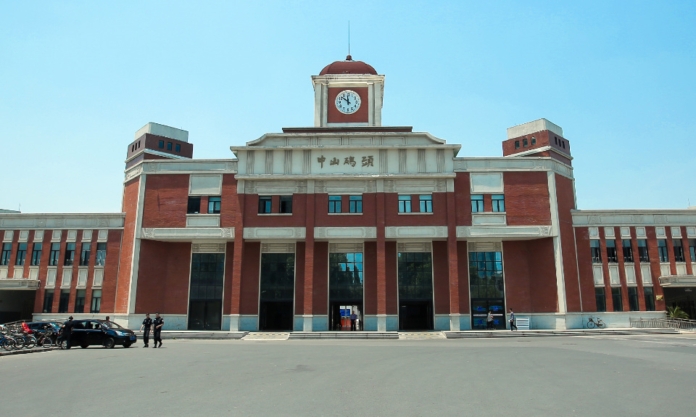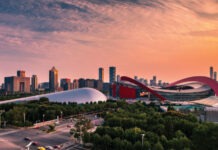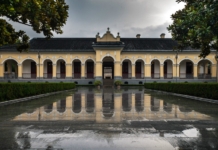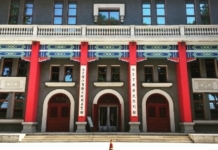Zhongshan Wharf is where, on 23 April, 1949, troops of the People’s Liberation Army landed to recapture Nanjing. It was the last time the city would be capital of China.
But the story of this, one of Nanjing’s most iconic buildings, goes back nearly another quarter of a century. Today’s Zhongshan wharf was built in 1925; on 8 August, 1928, the wharf was completed and named “Capital Wharf of the Jinpu Railway” (Tianjin-Pukou Railway).
History was then to unfold and the wharf would find itself bang in the middle of events regarded as among the 20th century’s most significant.
Sun Yat-sen (Sun Zhongshan) died in Beiping (now Beijing) in 1925. According to his last wish to be buried in Nanjing, on 28 May, 1929, his coffin was moved from Beijing to its final resting place in the Zhongshan Mausoleum on Purple Mountain. With the Wharf being the landing point in Nanjing for that coffin, it was felt fitting to rename the wharf in his memory.
It is also important to note that this was in fact also a landing point for a train ferry. On the north side of the Yangtze River was the terminus of the Tianjin-Pukou railway at the now-beautifully restored Nanjing Pukou Railway Station. Before the train ferry, passengers would need alight and take to the ferry on foot, but its arrival meant they could stay on the train, while the carriages in which they sat were shunted on to the ferry.
In 1933, Nanjing Railway Bureau rebuilt Zhongshan wharf and added a 100 metre-long barge, three steel trestles and a waiting room. The road from the Wharf to Yijiang Men was also later widened and a large car park built.
With two floors on both sides and three floors in the centre section, the wharf’s facade is the epitome of the Republic of China, while actual ferry embarking and disembarking takes place to the rear of the building. The second floor on the right is the ferry-ticket office and night-tour ticket office, while the middle part sits largely idle.
In 1968, with the Nanjing Yangtze River Bridge complete and open to traffic, demand for ferry crossings of the River decreased sharply and passenger throughput at Zhongshan Wharf began to quickly ebb.
At its peak, the Wharf saw about 150 ferry crossings daily, moving more than 100,000 people across the River. Today, less than 10,000 cross the River in this way each day.
The 2.8-kilometre ferry ride takes around 15 minutes and a one-way fare is ¥2. Use the Nanjing “Jinlingtong” transportation card and get it half price.
Meanwhile, that thought to be the Zhongshan Wharf Waiting Hall, located at 21 Jiangbian Lu, is an Important Modern Historical Site and Representative Building, as well as a District-Level Cultural Relics Protection Unit. With its hazy historical record, other theories abound as to the building’s true purpose at the time.












